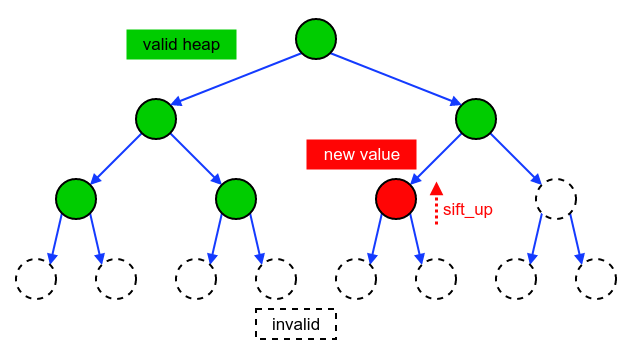Building a heap
Given an array with n elements, there are two ways to build a heap on it:
- Top-down
- Bottom-up
The top-down approach #
The first way is quite straightforward. We just do n insertions.
def build_heap_in_place(l):
for i in range(len(l)):
sift_up(l, i)The part in [0, i) is the heap we have built so far. l[i] is the new
element inserted.

This approach runs in O(n*log(n)) time.
The bottom-up approach #
The second way runs in O(n), even in the worst case. 1
def build_heap_in_place(l):
for i in reversed(range(len(l)//2)): # skip leaves
sift_down(l, i)Why does it work? #
In the operation pop_max() (max heap), we move the last element to
the top (heap_size -= 1), and call sift_down() on it.
Before the sift_down(), the new top node usually violates the heap
property ( l[i] >= max(l[left_child(i)], l[right_child(i)])
). However, the two subtrees of the top are both valid heaps.
What happens here in each iteration is quite similar.

Complexity #
The time complexity of this approach is O(n) instead of
O(n*log(n)), for there are exponentially more nodes at the bottom,
which need less sift_down().2
- Last level: don’t need
sift_down - The second to last level: at most 1
sift_down - The third to last level: at most 2
sift_down - …
1 * n/4 + 2 * n/8 + 3 * n/16 + … = O(n)
Conclusion #
There are two approaches to build a heap.
The top-down approach:
- Can be considered as doing n insertions
- O(n*log(n))
The bottom-up approach:
- Associated with
take_max() - O(n)